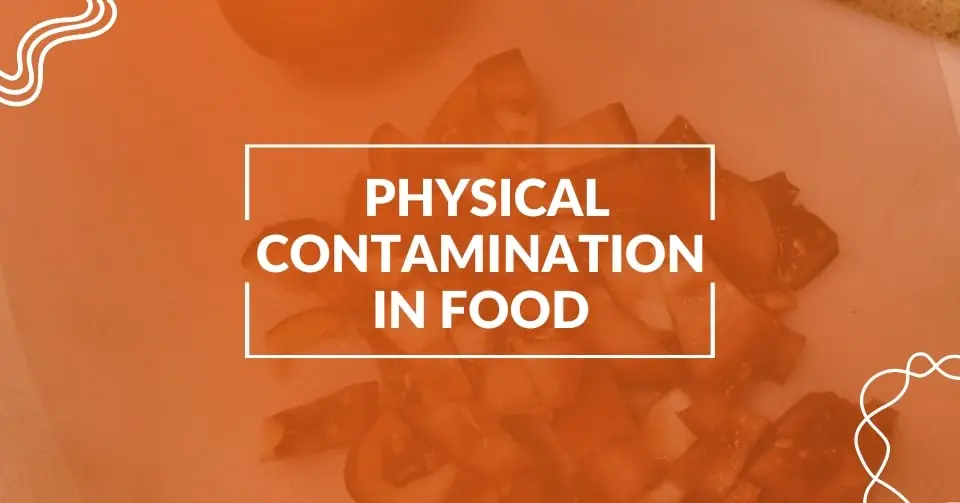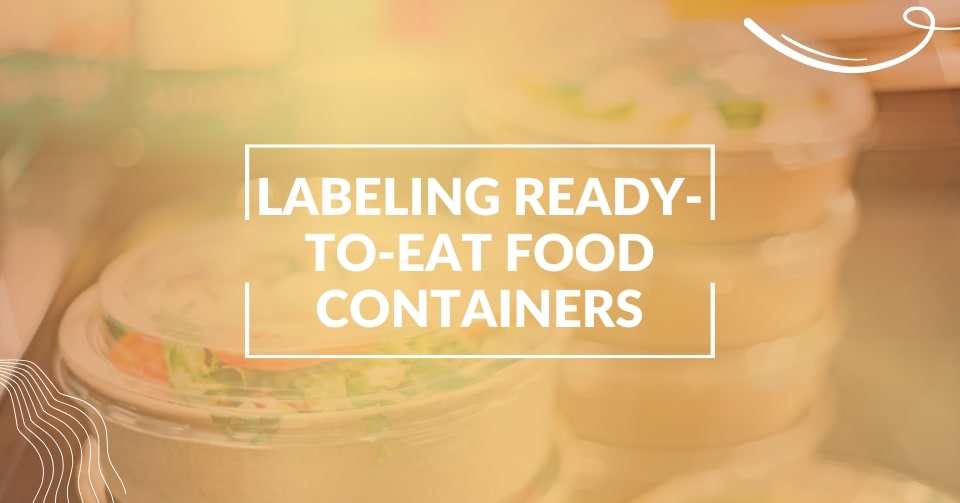Food safety is essential for consumers, businesses, and regulatory officials. One of the most dangerous risks in food safety is physical contamination, which occurs when foreign objects enter food products and threaten consumers’ health and safety.
Physical contamination is often visible, unlike biological or chemical contamination. This is a significant concern in food processing and manufacturing. Identifying and stopping physical contamination is necessary to maintain food quality, protect consumer health, and comply with food safety rules.
What is Physical Contamination in Food?
Physical contamination happens when unwanted items accidentally enter food during processing, packaging, storage, or handling. These pesky contaminants can come from various places, like equipment, human touch, packaging materials, or even the raw ingredients themselves.
As a type of food contamination, the consequences of physical contamination can range from minor inconveniences to serious health risks, including injuries and dental issues. As Benjamin Franklin once said, “An ounce of prevention is worth a pound of cure.”
The Best Example of Physical Contamination
Among many examples of physical contamination, metal pieces in food serve as one of the most dangerous and common examples. Malfunctioning devices, such as broken machinery parts, worn-out processing equipment, or loose screws, may cause metal contamination.
These metal fragments can be quite dangerous to your health, potentially leading to issues like mouth or throat irritation and even serious internal injuries.
Other Notable Examples
While metal fragments are the most concerning, several other physical contaminants can be found in food, including:
- Glass shards from broken containers or lighting fixtures
- Plastic pieces from damaged packaging materials
- Wood splinters from pallets or wooden surfaces used in storage
- Hair and human-related debris from improper handling
- Stones or dirt from unclean raw materials
In February 2025, Great Lakes Cheese Co. Inc. made the decision to recall around 12-ounce of Happy Farms by ALDI Colby Jack finely shredded cheese because of possible stainless steel contamination. These 12-ounce packages were only available at ALDI stores in Connecticut, Michigan, Ohio, and Pennsylvania. The issue came to light during routine quality assurance checks, which found stainless steel fragments that likely got mixed in during the shredding or packaging process.
The U.S. Food and Drug Administration (FDA) has labeled this incident as a Class II recall, which means the product might lead to temporary or reversible health issues. As a precaution, consumers are advised to steer clear of the product and either throw it away or return it to ALDI for a full refund.
Great Lakes Cheese took quick action to tackle the problem by pulling the affected products off the shelves and putting in place stricter protocols for inspecting and maintaining their equipment. This situation stands out as a key example of physical contamination in the food manufacturing industry and underscores the vital importance of proactive quality control and food safety measures in safeguarding consumer health.
How Does Physical Contamination Happen?
Physical contamination can occur at different points along the food supply chain, whether during production, processing, transportation, or storage. Any stray object that accidentally makes its way into food can pose health risks for consumers, so it’s critical to understand what causes physical contamination.
Faulty Equipment and Machinery
Food processing relies heavily on machinery, which can wear out over time. Components like screws, metal shavings, bits of plastic, and even glass from light fixtures can break off and end up in food products.
If regular maintenance and inspections aren’t performed, these hazards can easily go unnoticed, posing serious consumer risks. Keeping equipment in top shape, using protective guards, and conducting regular checks can significantly reduce the chances of contamination from mechanical sources.
Poor Handling Practices
When it comes to food safety, employee hygiene and handling practices are absolutely crucial in keeping contamination at bay. If workers don’t stick to proper hygiene protocols, they might unintentionally introduce unwanted items like hair, fingernails, jewelry, or even bits of gloves into the food.
In addition, misusing utensils and tools can also lead to contamination, especially if they’re damaged or worn out. By ensuring that all employees follow strict hygiene guidelines—such as wearing protective clothing, hairnets, and gloves—we can greatly reduce the chances of physical contamination.
Inadequate Storage and Packaging
How we store and package food is crucial for keeping it safe from contamination. Poorly stored food can easily pick up unwanted guests, such as dust, dirt, or insects. Plus, if the packaging is damaged or not sealed properly, bits of plastic, paper, or cardboard might end up getting in food.
Proper storage practices, such as airtight containers and checks for packaging damage, are essential to avoid these issues. Regular pest control is also key to ensuring food storage areas are free of insects and rodents.
Raw Ingredient Contamination
Sometimes, contaminants sneak into raw ingredients even before they hit the processing stage. If agricultural products haven’t been cleaned and appropriately sorted beforehand, you might find natural stuff like stones, dirt, shells, or plant debris.
This is especially common with grains, fruits, and vegetables. To tackle this, implementing strict quality control measures—like thorough washing, sieving, and visual checks—can help get rid of any potential contaminants before they reach consumers.
Preventing Physical Contamination in Food Manufacturing
Regarding food safety, taking a proactive stance is essential to preventing physical contamination.
Metal bits, plastic shards, glass pieces, and other foreign objects not only can harm consumers but also tarnish a brand’s reputation.
To tackle these risks head-on, food manufacturers must implement robust safety measures and keep a close eye on their processes. Here are some best practices to help avoid physical contamination in food manufacturing.
Implementing HACCP (Hazard Analysis and Critical Control Points)
HACCP, or Hazard Analysis and Critical Control Points, is a widely recognized food safety management system that plays a vital role in identifying, assessing, and controlling hazards at different stages of food production.
By focusing on Critical Control Points (CCPs), manufacturers can pinpoint areas where contamination is most likely to occur and take proactive steps to prevent it.
These key areas include checking raw materials, processing, packaging, and storage. HACCP also highlights the necessity of regular documentation and verification to ensure that preventive measures are consistently implemented.
By adopting this organized approach, food manufacturers can significantly reduce the risk of physical contamination.
Regular Equipment Maintenance and Inspection
The machinery involved in food production goes through a lot of wear and tear, which can increase the chances of broken parts contaminating the food. That’s why it’s so important to carry out regular maintenance and inspections on the equipment to identify any potential hazards before they lead to contamination.
This includes checking for loose screws, worn-out conveyor belts, cracked plastic components, and any broken glass from overhead fixtures.
Sticking to a preventive maintenance schedule is essential; any damaged parts should be repaired or replaced immediately. Additionally, using food-safe materials for machine parts and protective covers can help prevent foreign objects from getting into food products.
Spot Hazards Before They Escalate
Use FoodReady’s traceability and detection tools to catch issues early.
Proper Employee Training
Employees are key players in keeping food safe from physical contamination. When they receive proper training, they understand the importance of hygiene and safe handling practices.
They should steer clear of wearing jewelry, artificial nails, or loose accessories that might accidentally drop into food. Protective gear like gloves, hairnets, and beard covers should be necessary to keep hair and personal items out of the food.
Workers must also be trained to spot and report any signs of contamination, such as damaged equipment or improper storage conditions. Regular refresher training sessions are a great way to reinforce these safety practices and uphold high hygiene standards in food manufacturing facilities.
Advanced Detection Methods
Modern technology has made detecting and eliminating physical contaminants in food processing much more efficient. Food manufacturers now use advanced detection methods like metal detectors, X-ray scanners, and optical sorting machines to catch foreign objects before products reach consumers.
Metal detectors are great for spotting ferrous and non-ferrous metals that might have slipped into the food during processing. X-ray scanners excel at identifying denser contaminants like glass, bones, and thick plastic materials.
Meanwhile, optical sorting machines employ cameras and sensors to find and remove foreign particles from raw materials, ensuring that only clean ingredients proceed to the following processing stage.
Manufacturers can significantly lower contamination risks by incorporating these detection systems into a comprehensive food safety plan.
How FoodReady AI Helps Prevent Physical Contamination?
When it comes to preventing physical contamination, especially those pesky metal fragments, it takes more than just good intentions. You need a solid structure, consistent practices, and real-time monitoring. That’s where FoodReady’s food safety software excels.
With FoodReady AI, manufacturers can easily build and automate their HACCP plans, set up Corrective and Preventive Actions (CAPAs), and create tailored checklists for equipment maintenance and inspections. The platform also offers real-time monitoring, enabling teams to spot potential hazards before they escalate into expensive recalls.
Thanks to FoodReady’s traceability moduletools, businesses can keep track of every step in the production process and swiftly isolate any affected batches if contamination does happen. This safeguards consumers and helps companies stay on the right side of regulatory requirements like FDA and FSMA standards.
Stay Ahead of Contamination Risks with FoodReady AI
Don’t wait for a recall to tighten up your food safety processes. FoodReady equips your team with the tools to prevent contamination before it even starts, protecting your customers, brand, and bottom line.
Ready to enhance your food safety program? Schedule a demo with FoodReady AI today!
Conclusion
When it comes to food safety, physical contamination is a big deal that can put both consumers and businesses at risk. One of the most concerning examples is metal fragments, which can lead to serious injuries.
To tackle this issue, food manufacturers must adopt strict safety measures, use cutting-edge detection technologies, and use advanced food safety management software like FoodReady AI.
By putting food safety first, businesses safeguard their customers, ensure regulatory compliance, and maintain a solid reputation in the industry.
Contact FoodReady AI today and we will help you contribute to food safety and comply with regulatory requirements.
Physical contamination refers to the presence of foreign objects in food products, such as metal and plastic pieces, glass sharks, or hair, which can cause damage when consumed.
Primary sources include defective machinery, improper handling, poor storage conditions, and contamination from raw materials.
Preventive measures include regular equipment maintenance, employee training, HACCP implementation, and advanced detection techniques such as metal detectors and X-ray scanners.
Foodredy provides automatic food safety management solutions, including real-time monitoring, hazard analysis, traceability, and regulatory compliance support.
Consumers should report the issue immediately to the manufacturer or retailer. If there are health risks to a contaminated person, it is advisable to pay medical attention and contact food safety authorities.








